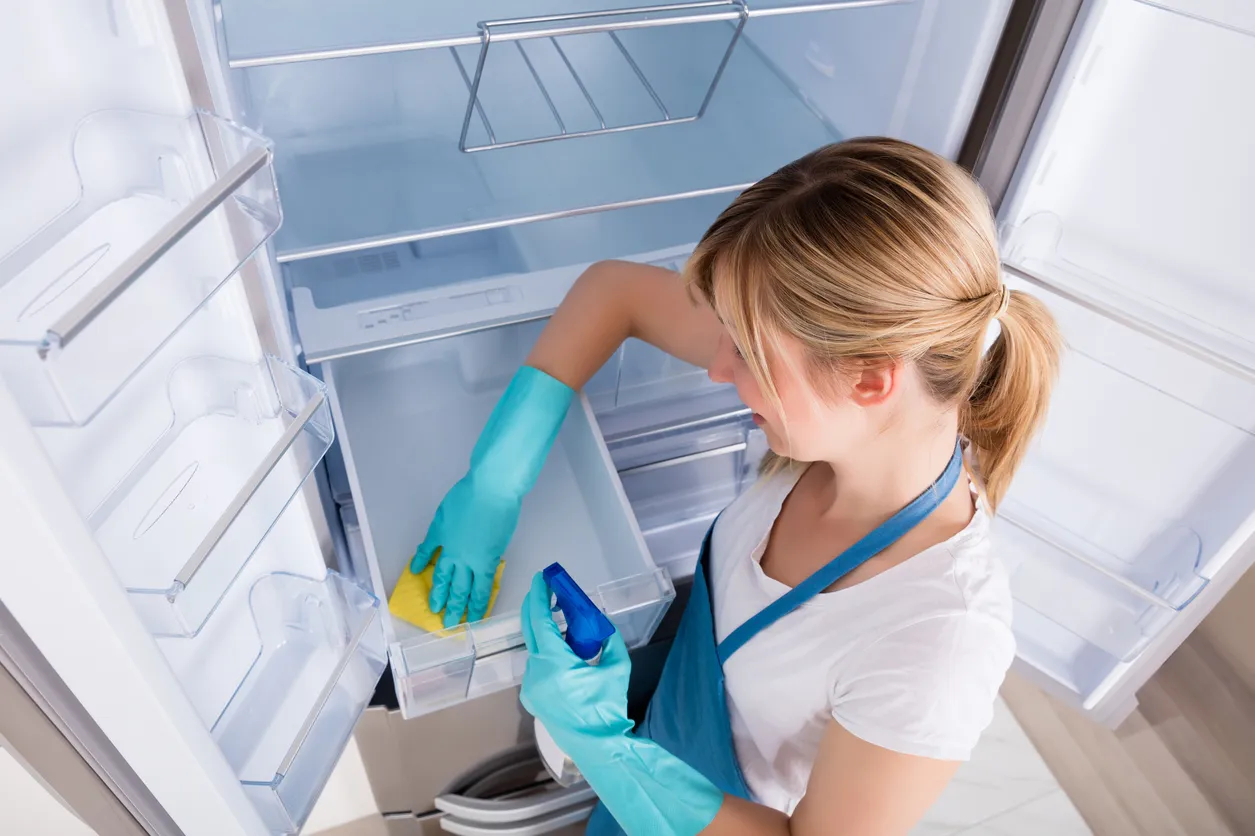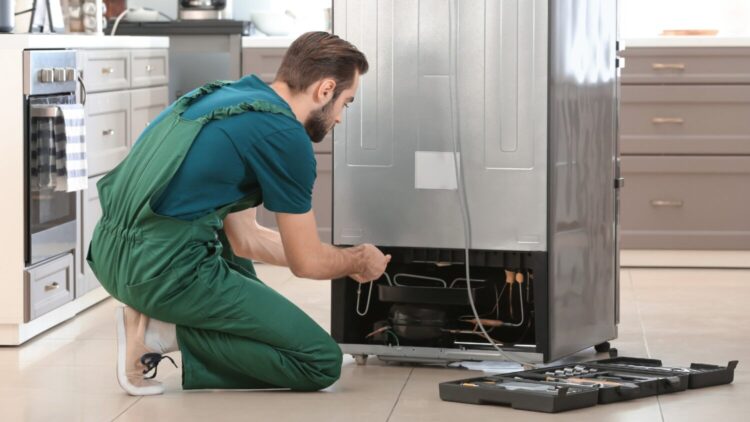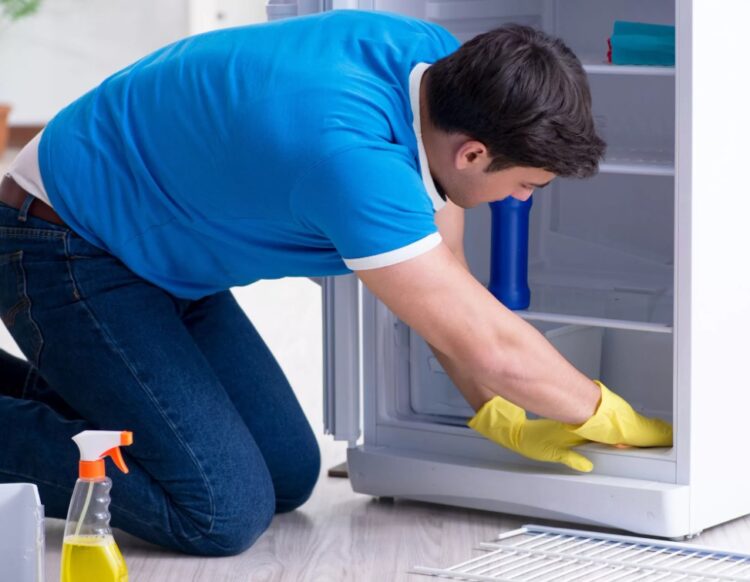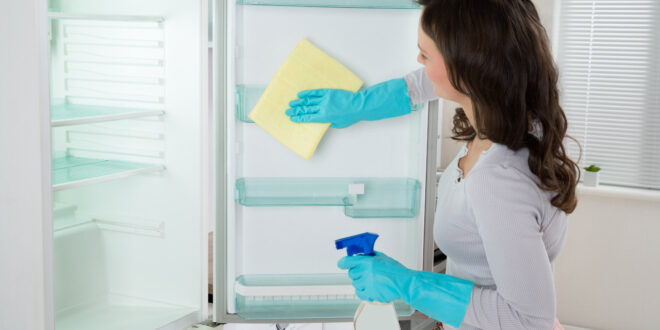Your refrigerator is the heart of your kitchen, a vital appliance that stores the sustenance of your daily life. Whether it’s keeping fruits and vegetables crisp, dairy products fresh, or leftovers safe for another day, your fridge plays a crucial role in maintaining the quality and safety of your food. To ensure your refrigerator continues to serve you well, it’s essential to keep it clean and hygienic.
Aside from that, cleaning the fridge is also important before moving. When the time comes to move, ensuring your trusty fridge is clean and hygienic becomes even more critical. Moving an unclean refrigerator can lead to unpleasant odors, bacterial growth, and potential health risks. So before calling on the best Melbourne removalists, make sure to learn how to clean a fridge properly.
This guide will walk you through the steps and precautions needed to maintain a fresh and safe environment for your groceries. From removing stubborn stains to responsible food disposal, we’ll cover it all to ensure your fridge not only looks clean but also functions at its best, promoting food safety and an organized kitchen. Let’s journey to a cleaner, fresher, and more hygienic fridge.
Materials and Preparation

Here’s a list of cleaning supplies you’ll need when cleaning your refrigerator:
- Warm, soapy water ─ Use a mild dish soap mixed with warm water to clean the interior and shelves.
- Baking soda ─ Helpful for removing odors and stubborn stains.
- White vinegar ─ For disinfection and removing mold or mildew.
- Microfiber or soft cloth ─ Ideal for wiping down surfaces without scratching.
- Sponge or scrub brush ─ Use for scrubbing away spills and stains.
- Old toothbrush or soft brush ─ For cleaning the rubber door gaskets and other hard-to-reach areas.
- Towels or paper towels ─ To dry and wipe surfaces.
- Cooler or insulated bags ─ To temporarily store perishable items while cleaning.
- Disinfectant wipes ─ For quick surface disinfection.
- Gloves ─ To protect your hands from cleaning chemicals and cold surfaces inside the refrigerator.
Safety Precautions

Safety is essential when cleaning your refrigerator. Here are some safety precautions to keep in mind:
- Unplug the refrigerator ─ Before cleaning the interior, unplug the refrigerator or disconnect it from the power source to avoid electrical hazards.
- Work in a well-ventilated area ─ Ensure adequate ventilation to disperse any fumes from cleaning solutions. If you use strong chemicals, open windows or doors for better airflow.
- Wear protective gear ─ Wear gloves to protect your hands from cleaning solutions and cold surfaces inside the fridge. If using chemicals, eye protection and a mask may be necessary.
- Be mindful of food safety ─ Safely store perishable items in a cooler or insulated bags while cleaning to prevent food spoilage. Check expiration dates and dispose of expired items properly.
- Use appropriate cleaning solutions ─ Follow the manufacturer’s recommendations for cleaning solutions. Avoid using abrasive cleaners that could damage surfaces.
- Prevent slips and falls ─ Be cautious of any water or cleaning solution on the floor. Place towels or mats on the floor to prevent slipping.
- Beware of sharp objects ─ While cleaning, be mindful of any sharp or protruding objects inside the refrigerator, such as glass shelves. Handle them carefully to avoid injuries.
- Avoid overloading the refrigerator ─ Don’t overload the fridge with items or heavy cleaning products while you’re cleaning. Overloading can strain the appliance and increase the risk of accidents.
- Check for electrical hazards ─ When cleaning the exterior, ensure you’re not spraying or spilling liquids near electrical outlets or cords. Avoid using electrical appliances near water or wet surfaces.
- Keep children and pets away ─ While cleaning, it’s best to keep children and pets out of the area for safety. Cleaning solutions and open appliances can pose risks to them.
- Dispose of cleaning materials properly ─ Dispose of any used cleaning materials and chemicals according to local regulations and guidelines. Do not pour chemicals down the drain unless they are safe.
- Read labels and follow instructions ─ Always read and follow the instructions on cleaning product labels. Some cleaning solutions may require specific precautions.
By following these safety precautions, you can minimize the risks of cleaning your refrigerator and ensure a safe and effective cleaning process.
Step-by-Step Cleaning Process

Emptying the refrigerator
Emptying the refrigerator when cleaning is a crucial step that involves removing all food and perishable items from the fridge to prevent spoilage and create a clear workspace for thorough cleaning. You can use insulated bags as temporary storage for perishable items to maintain their freshness and safety while the fridge is cleaned.
Removing shelves and drawers
Removing shelves and drawers is essential when cleaning a fridge because it enables access to all interior surfaces, ensuring the removal of spills, stains, and potential sources of odors, resulting in a cleaner and more hygienic refrigerator.
Cleaning the refrigerator
To use warm, soapy water to clean your fridge, mix mild dish soap with warm water to create a soapy solution. Dampen a soft cloth or sponge in the mixture, and wipe down the interior surfaces, including walls, shelves, and drawers. Pay extra attention to spills and stains, gently scrubbing if needed. Rinse the cloth, wipe down with clean water, and dry the interior thoroughly with towels or paper towels. Finally, replace shelves and food items once everything is dry.
Dealing with stubborn stains in your refrigerator can be tackled effectively by creating a paste using baking soda and water. Apply the paste to the stain, let it sit for a few minutes, then gently scrub and rinse the area to remove the stubborn residue.
Responsible food disposal
After cleaning your fridge, responsible food disposal is essential. Check for expired or spoiled items and dispose of them properly to prevent foodborne illness. Consider composting when applicable to reduce food waste, and follow local waste disposal guidelines to minimize your environmental impact.
Additional Tips and Troubleshooting

Dealing with odors
Dealing with odors when cleaning your fridge is vital for a fresh-smelling appliance. After cleaning, leave an open container of baking soda or activated charcoal inside the fridge to absorb lingering odors. Additionally, you can place a bowl of freshly ground coffee or a slice of lemon to help neutralize any remaining smells. Regularly replacing these odor absorbers will keep your fridge smelling clean and pleasant.
Maximizing fridge organization
Maximizing fridge organization is key to an efficient and well-managed kitchen. To achieve this:
- Store similar items, label containers, and use clear bins for easy visibility.
- Keep frequently used items at eye level, and use adjustable shelves to accommodate various-sized items.
- Regularly check for expired food and reorganize to maintain a clutter-free and functional refrigerator.
Final Thoughts
Maintaining a clean and hygienic refrigerator is not just a matter of appearance but also safety and functionality. Regularly cleaning your fridge using the methods outlined in this guide ensures that your food stays fresh, your appliance operates efficiently, and you reduce the risk of contamination and odors.
Remember to follow safety precautions, stay organized, and make responsible food disposal a habit. By doing so, you’ll not only enjoy a cleaner and more organized kitchen but also promote a healthier and more environmentally responsible lifestyle. So, don’t delay—give your refrigerator the care it deserves and enjoy the benefits of a fresh and hygienic fridge.
 Hi Boox Popular Magazine 2024
Hi Boox Popular Magazine 2024



